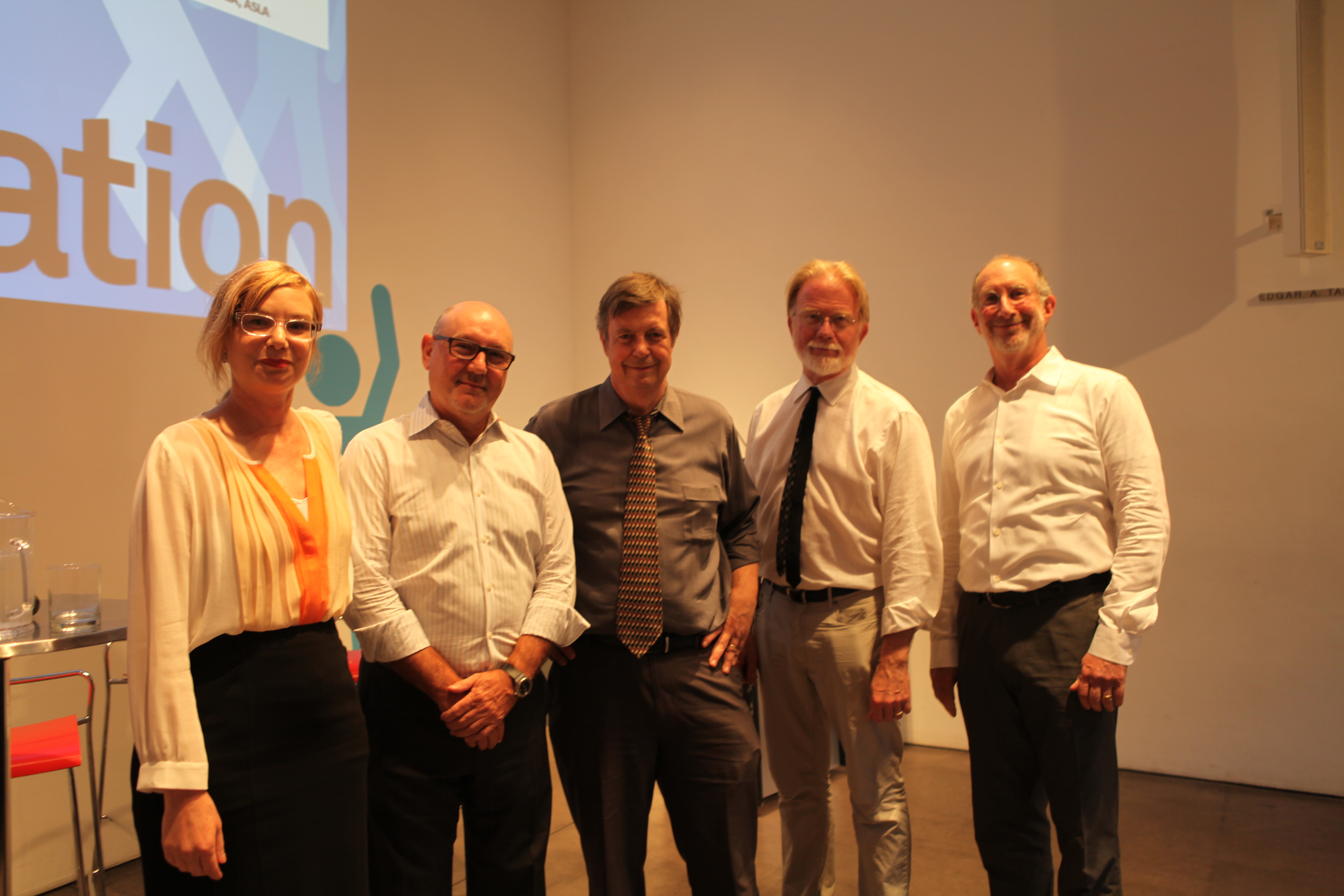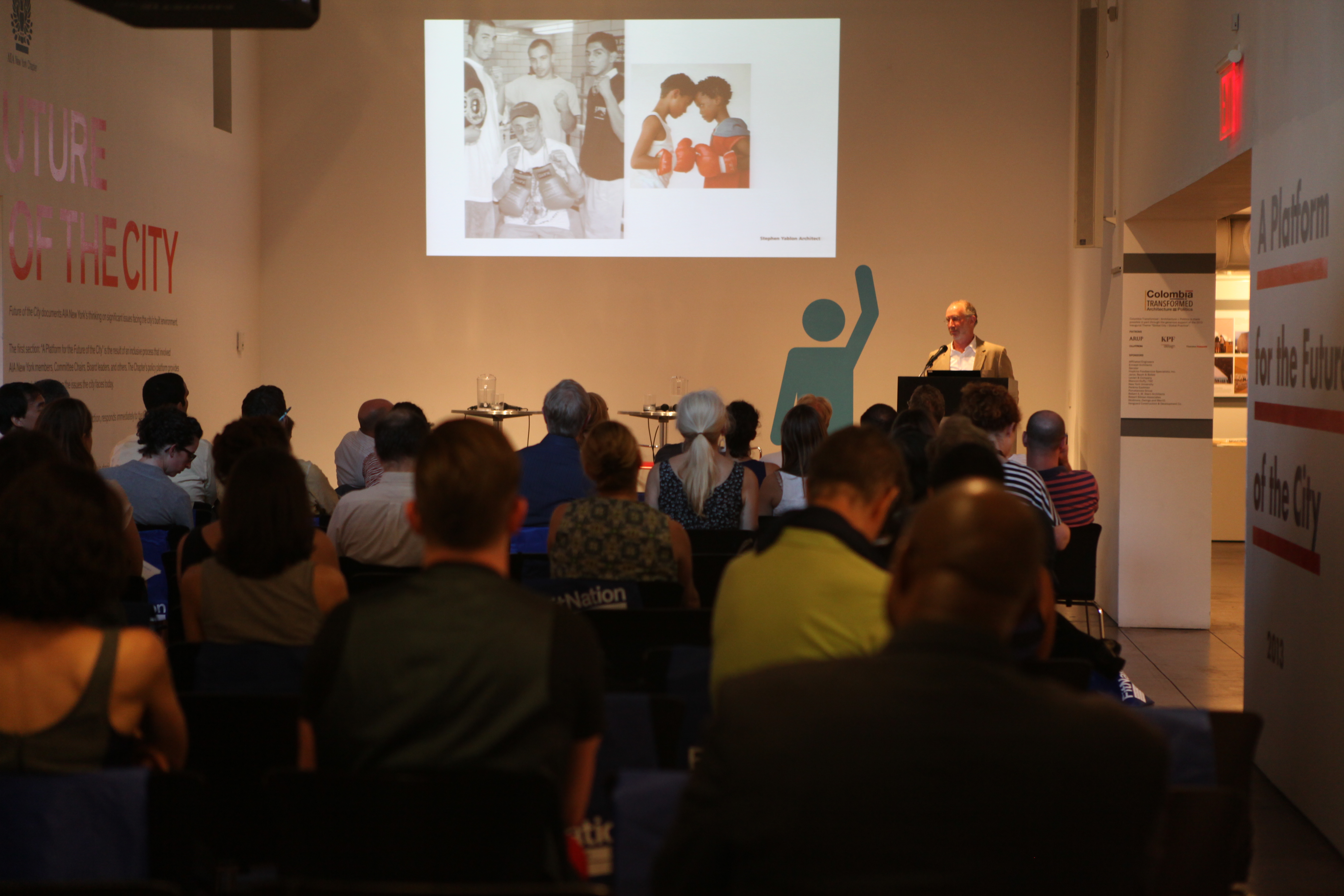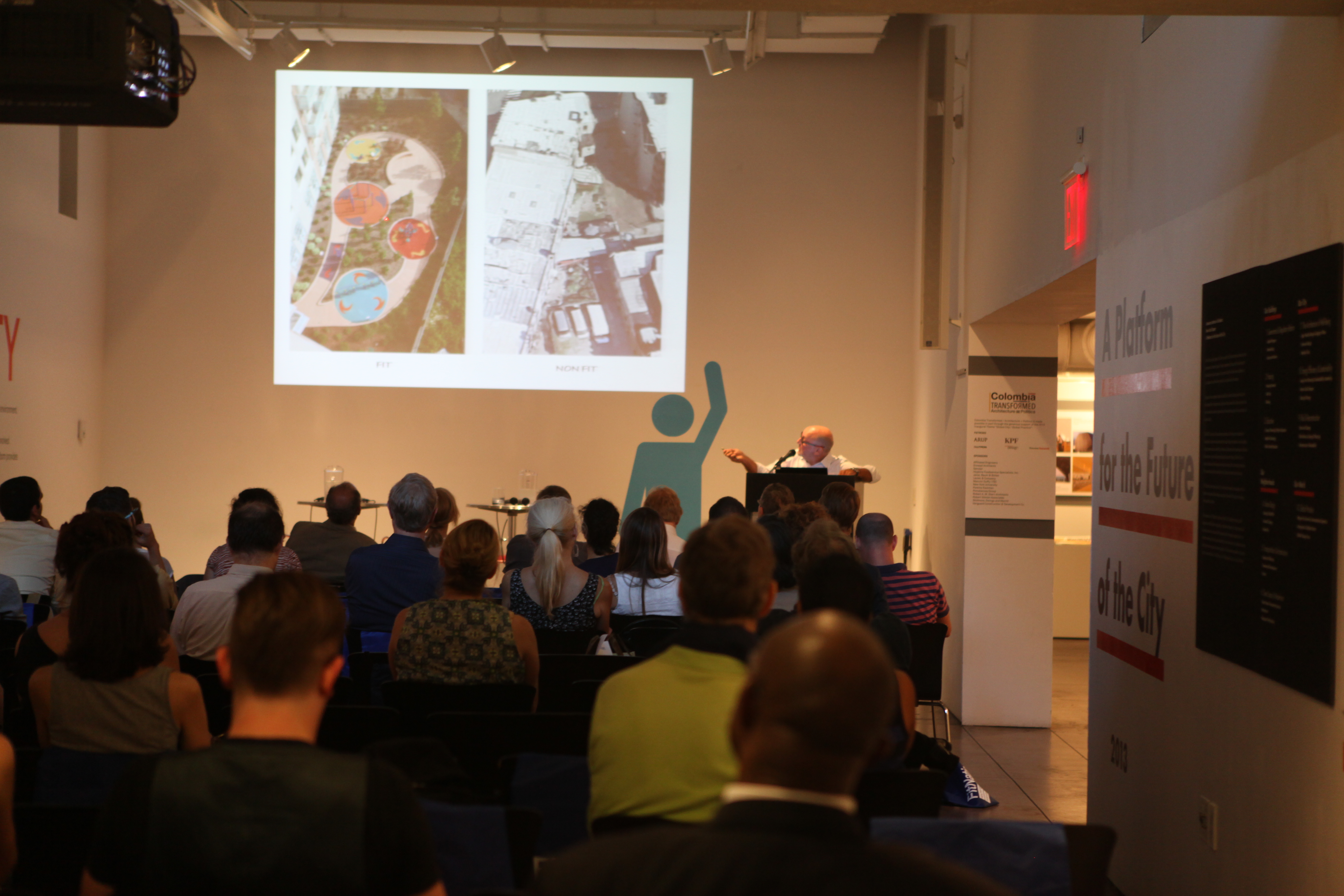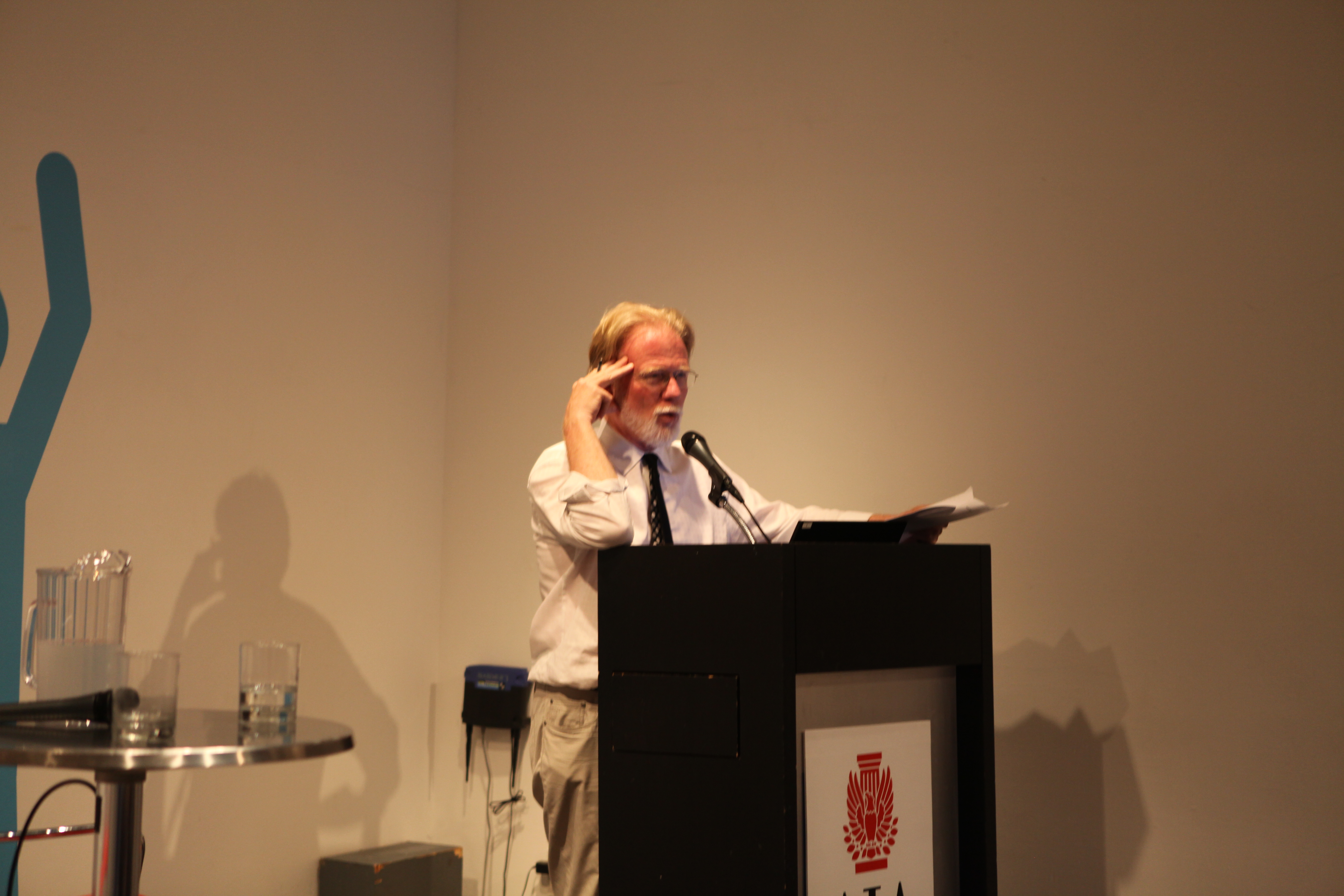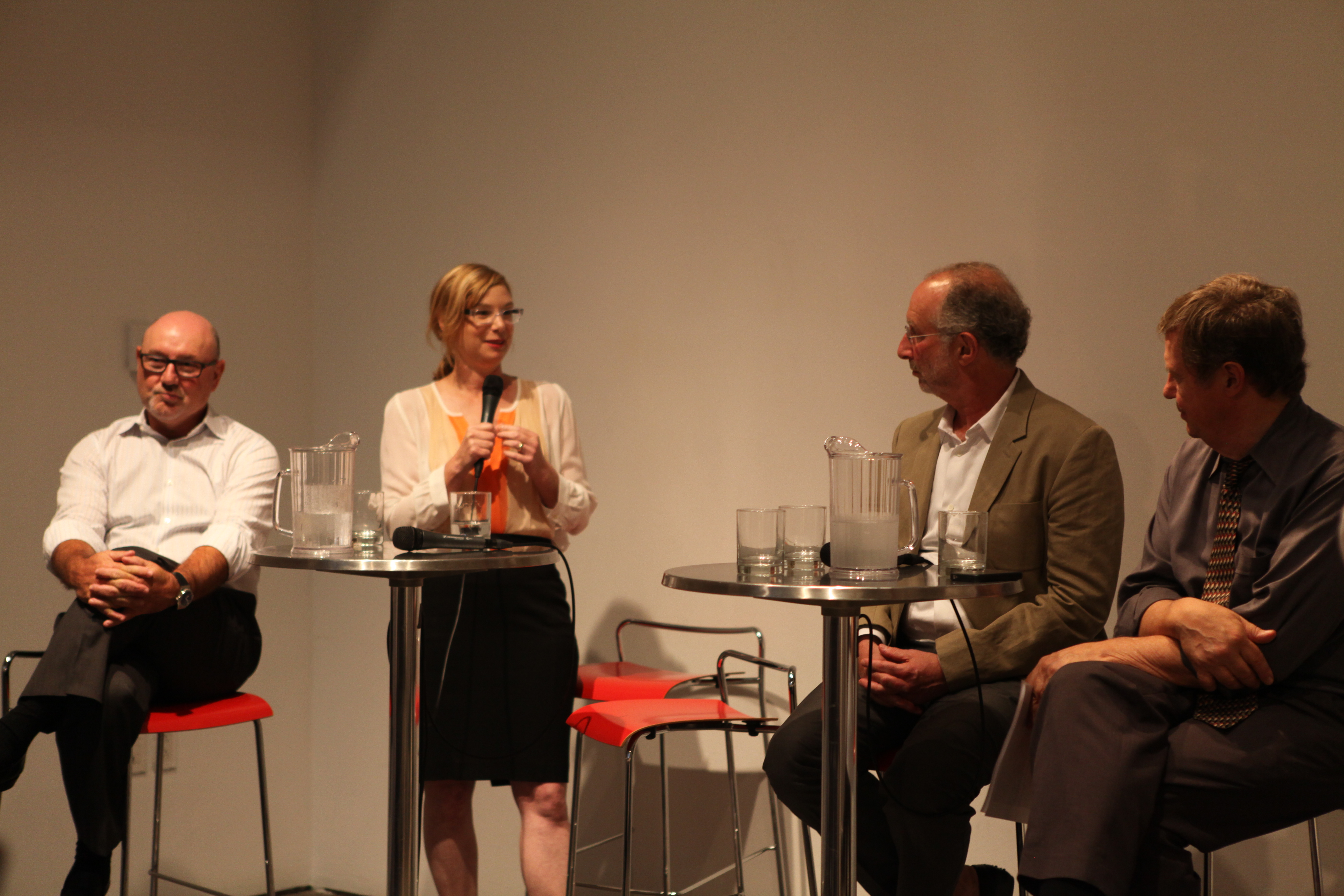by: Bill Millard
Just a few weeks after the official launch of the Center for Active Design, the national media have already begun repeating a meme that compresses the scope and complexity of the active-design movement to one line: “Mayor Bloomberg wants you to take the stairs.” He does, of course, and so do thousands of specialists in disciplines from epidemiology to architecture. But there’s a lot more to it than the common-sense stair prompts posted throughout the city’s buildings. The Fit Nation movement is going truly national, with regionally-appropriate interventions and adaptations appearing at sites with a wide range of densities and urban designs. It’s less a matter of New Yorkers spreading prescriptive advice than one of multiple centers of expertise linking up to share best practices. In fact, AIANY Executive Director Rick Bell, FAIA, noted in his introduction that the FitNation exhibition will be travelling to a dozen other US cities, including five made possible by AIA National’s Fund to Fit grants. As Moderator Charles McKinney, Hon. AIA, Affil. ASLA, observed in introducing the various case reports, “polemics about style” in architectural discussions have given way in recent years to discussion of practical principles; since some 80% of American health-care costs are related to lifestyle variables, environmental designs that integrate more exercise into people’s lives are powerfully beneficial tools.
Ernest Hutton, FAICP, Assoc. AIA, having researched conditions in 14 low-density neighborhoods and suburbs around the country, described planning interventions suited to auto-dominated areas, often variations on the rail-to-trail and emerald-ring models.
For instance, metropolitan Louisville’s “Healthy Hometown” program promotes physical activity through a loop of linked parks and trails in a 100-mile perimeter area, tying into the city’s downtown Frederick Law Olmsted parks. Portland’s comprehensive planning emphasizes neighborhood participation through mapping exercises to envision desired connections in the greenway system; in some areas, citizens have calmed auto traffic by painting their own “guerrilla crosswalks.”
Larger cities are also taking part. Atlanta’s BeltLine adapts an unused 22-mile rail corridor into parks and eventually new transit. Tucson, where wide arterials are particularly pedestrian- and cyclist-unfriendly, is experimenting with new traffic-signal activation systems acronymized as the High Intensity Activated Cross WalK (HAWK), TwO GroUps CAN cross (TOUCAN), and PEdestrian LIght Control ActivatioN (PELICAN).
“Complete streets” right-of-way retrofits are difficult in suburban areas, Hutton acknowledged, but not impossible. Likewise, retrofitting shopping malls (which appear “from the air like a big magnet that both repels pedestrians and attracts autos“) can urbanize their surrounding areas through measures like replacing masses of asphalt with decked parking. The best results in all these infrastructure upgrades, he finds, involve coordinated agendas (e.g., synergies among health and sustainability goals) at appropriate political levels, particularly the municipal.
Yael Lehmann of Philadelphia’s Food Trust reported successes in redesigning bodegas, often the chief food source in some neighborhoods and too often configured to encourage the worst consumer decisions by putting the junk food up front, in ways that make shelves of fresh produce more accessible. Relatively low-cost renovations, guided by an awareness that the visible food environment affects what we eat, have helped Philadelphia achieve encouraging declines in childhood obesity: a 5% drop for all children, and even better in some subgroups (7% among Hispanic girls, 8% among African-American boys). It takes more than community store interventions, she observed, but these gains – paralleled in New York and certain other cities) – are the first declines in obesity since the 1970s, a sign that the tide reflected in the Centers for Disease Control and Prevention’s notorious national obesity map is potentially reversible.
Stephen Yablon, AIA, LEED AP, after tracing the role of public health in the early Modernist movement (illustrated by Alvar Aalto’s Paimio Sanatorium), discussed local success stories like NYCHA’s Betances Community Center in Mott Haven. Here, an original plan to house a renowned youth boxing program led to a broader multipurpose facility with extensive glazing that has promoted a Jacobsian “eyes on the street” atmosphere conducive to parental supervision and increased safety.
In the Rockaways, where sea-level rise and severe storms threaten residences and recreational space, Yablon’s “Yona on the Beach” plan (inspired by the artificial topographies of Yona Friedman) proposes a barrier-island adaptive strategy, which raises beach neighborhoods above 100-year flood plains on an open-truss structure resembling an oil platform and allows the beach ecosystem below to evolve naturally.
In another South Bronx model project, Hugo Subotovsky, AIA, presented the Melody affordable-housing co-op, a LEED Platinum-level winner of the Innovation Credit for Health through Physical Activity. Its features include not only bright, colorful adult fitness and juvenile activity areas, ample natural light (aided by alternating balcony placements to admit light onto terraces), wide views with musically themed décor (evoking the neighborhood’s 1940s-50s jazz history), and prominent, welcoming staircases, but also elevators deliberately engineered to operate slowly, subtly encouraging residents to decide “to hell with the elevator” and choose the stairs.
Convincing the elevator contractor to implement this feature wasn’t easy, Subotovsky recalled. The decisive step was an agreement to remove the manufacturer’s nameplate. This shift in perception helped rebalance the amounts of active and sedentary time in residents’ days. Citing two 20th-century inventions that drove Americans indoors (television and air conditioning), Subotovsky advocated counteracting that tendency through details inspired by 21st-century common sense.
Bill Millard is a freelance writer and editor whose work has appeared in Oculus, Icon, Content, The Architect’s Newspaper, and other publications.
Event: Living in a Fit Nation
Location: Center for Architecture, 07.18.2013
Speakers: Stephen Yablon, AIA, LEED AP, Principal, Stephen Yablon Architect; Yael Lehman, Executive Director, The Food Trust; Hugo Subotovsky, AIA, Architect; Ernest Watson Hutton, Jr., FAICP, Assoc. AIA, Hutton Associates/Planning Interaction; Charles McKinney, Hon. AIA, Affil. ASLA, Principal Urban Designer, New York City Department of Parks and Recreation (moderator)
Organizers: AIANY in collaboration with the Center for Architecture Foundation
Sponsors: National Endowment for the Arts, AIA, Center for Active Design, Langan, MechoSystems, Sciame, and Skidmore Owings & Merrill (Patrons); FXFOWLE, Lutron Electronics, Michael Fieldman, Syska Hennessy Group, and Zetlin & De Chiara (Sponsors); Blue Sea Development Company, Dattner Architects, and ECORE Commercial Flooring (Supporters); Archinect and Bustler (Media Sponsors)








